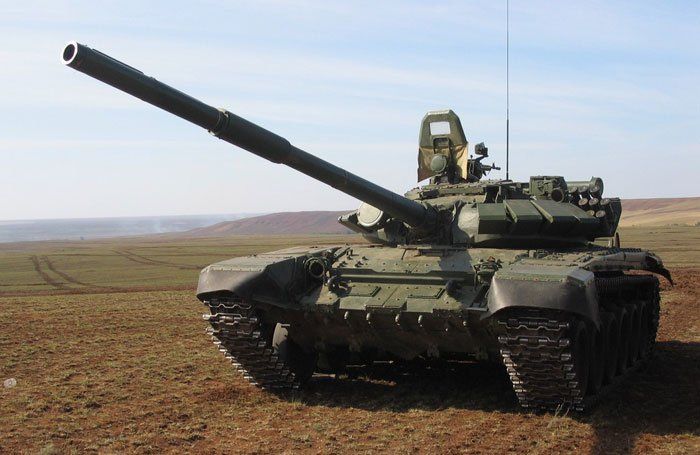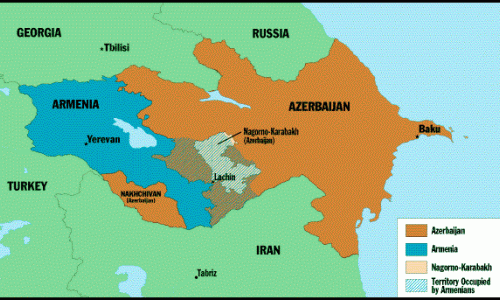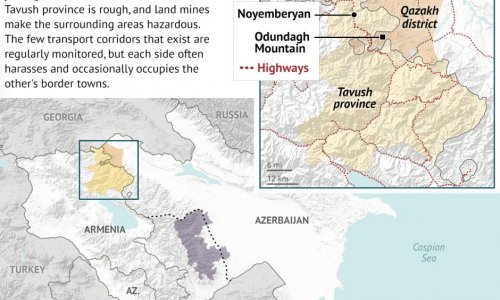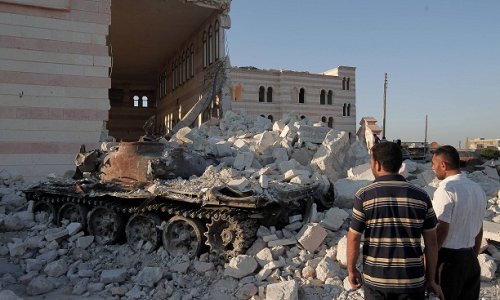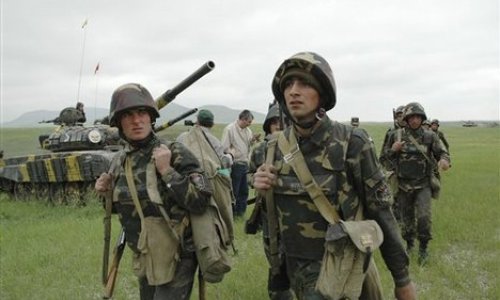Russian and Armenian relations are close and getting deeper. Russia is Armenia’s largest trade partner, with bilateral trade in 2014 surpassing $1.4 billion, and Armenia on January 1 joined the Russian dominated Eurasian Economic Union as its fourth member. More than two million diaspora Armenians currently reside in Russia. In the sphere of military cooperation, Armenia allows the Russian military to use two bases.
But there remains a significant obstacle in the otherwise mutually beneficial liaison – Russian armaments sales to Armenia’s archenemy, Azerbaijan. After trying discreet diplomacy, Armenia is now only complaining as well as taking its complaints to the Collective Security Treaty Organization (CSTO), a defense pact in which both Armenia and Russia are members.
On March 23 Armenian Defense Minister Seyran Ohanyan met with and complained to both CSTO Secretary General Nikolai Bordiuzha and CSTO Joint Staff chief Lieutenant General Aleksandr Studenikin about the weaponry sales. Ohanyan bluntly commented, "We are certainly concerned over any arms sales to Azerbaijan, from any state. And we are working in this direction. Military and political leadership is not sitting still.”
The CSTO was established after the collapse of the USSR in December 1991; initial CSTO members were Armenia, Kazakhstan, Kyrgyzstan, Russia, Tajikistan, and Uzbekistan; Georgia, and Belarus joined in 1993. CSTO’s current membership is Armenia, Belarus, Kazakhstan, Kyrgyzstan, Russia and Tajikistan, with Afghanistan and Serbia as observer states. Armenia is the only CSTO member in the South Caucasus.
Four days before Ohanyan’s meeting, during the "At the Foot of Mount Ararat” media conference in Erevan, Armenian President Serzh Sargsyan, replied to a question of a journalist from Moscow about Russia armaments sales weapons to Azerbaijan by noting, "Since the establishment of the Armed Forces of the Republic of Armenia, we are grateful and thankful to our ally for assistance. Of course, in these relations, we are concerned about Russia’s selling weapons to Azerbaijan because of differing reasons and rationale, and the problem here is not the quality of the armaments. The problem is that an Armenian fellow standing on our border or on the line of contact realizes that they (Azeri soldiers) are trying to kill him with Russian weapons. This is the hardest thing, and this is what might have a negative influence on our relations. For a long time, during 250 years, the Armenians and Russians have been living side by side, had common enemies, foes, and have not fired at each other from guns produced in their country. This is an issue, a problem, and this problem must be resolved.”
There is certainly a major disparity between the two countries’ defense spending. Flush with revenue from hydrocarbon exports, in 2014 Azerbaijan’s military budget was $3.8 billion, up from $3.6 billion in 2013 and $3 billion in 2012. In comparison, Armenia’s 2013 defense budget was $447 million. In June 2014 Azeri Defense Minister Zakir Hasanov noted that the Armenian defense spending was 5.3 times less than what Azerbaijan spent.
Because of its strained relations with Azerbaijan and Turkey, Armenia sees military-political cooperation with Russia as an essential element of its security and defense policy. Besides the two Russian military bases, Russian border guards assist Armenia in protecting its borders with Turkey and Iran.
In the wake of deteriorating Western-Russian relations over Ukraine, Russia sees its military presence in Armenia as increasingly important. The Russian air force is upgrading Armenia’s Soviet-era Erebuni airbase, which houses the Russian 3624th Air Base and currently hosts a squadron of MiG-29 fighters and Mi-24 attack helicopters. As the Ukrainian crisis deepened, in Jan. the Russian Southern Military District press service confirmed that a contingent of Mi-24P attack helicopters, Mi-8MT and Mi-8SMV military transport helicopters were scheduled for deployment at Erebuni later in the year. Underlining Russia’s strengthening presence in Armenia, on October 13-19, 2014, 3,000 Russian and Armenian military personnel from Erebuni and other facilities held military preparedness joint exercises, which included Erebuni MiG-29s, at Armenia’s Kamhud and Alagyaz training facilities.
Besides Erebuni, the Russian 102nd Military Base is in the Armenian city of Gyumri. In stark contrast to Ukraine’s years-long haggling with Russia over the terms of its lease of Sevastopol for the Black Sea Fleet, in Aug. 2010, Russia and Armenia agreed to prolong the Gyumri lease agreement until 2044.
In the financial realm Russia provides Armenia with discounted armaments and investment along with political support, for which Armenia reciprocates by providing territory for Russian military base deployment, thereby contributing to the preservation of Russia’s presence in the South Caucasus. Since the Ukrainian crisis erupted last year, Russia’s strengthening of its military presence in Armenia sends a strong message to neighboring NATO member Turkey, as well as NATO Partnership for Peace (PfP) associates Georgia and Azerbaijan.
The question is how far Armenia can press Russia on the armaments issue, as its economy is in dire shape and it desperately needs Russian assistance. Armenia’s total external debt now stands at $4.9 billion, 52 percent of the country’s GDP. Two years ago Armenia’s Audit Chamber warned in its budget report that management of the debt would become riskier in 2013 because servicing the debt would reach $300-400 million a year, leading The Wall Street Journal to warn that Armenia had become one of the world’s most unreliable debtor nations. Seeking to stave off further financial hemorrhaging, last month the Armenian government has released a $500 million Eurobonds package for 10 years at a rate of 7.5 percent. Worsening Armenia’s financial situation, according to the Central Bank remittances from Armenians working in Russia, the main source of foreign currency flows, dropped 56.01 percent in January 2015 compared with a year earlier.
Furthering Armenian fiscal dependency on Russia, it is Armenia’s main investor, with total investments exceeding $3 billion, mainly in the energy and communications sectors. Underlining Russia’s deep involvement in Armenia’s transport sector, a Feb. 2008 agreement between the Russian and Armenian governments transferred Armenian Railways to Russian Railways’ subsidiary, South Caucasus Railways for 30 years. The agreement committed the Russians to investing $230 million in Armenia during the first five years of operations and subsequently an additional $240 million. Armenia also purchases natural gas from Russia at preferential rates, with only Belarus receiving a better price. Even here the near bankruptcy of the Armenian government is evident, as last month it concluded an agreement with Russia’s Gazprom on reducing the price of gas supplied to Armenia from $189 per thousand cubic meters (tcm) to $165 per tcm.
For the moment, the Armenian-Russian differences are being glossed over. Two months ago Bordiuzha told reporters in Moscow that while CSTO members might have differing views and approaches on certain points, "I have not felt any cooling among the member states or their attempts to distance themselves from the CSTO processes.”
Whether Moscow will be able to mollify Armenia’s concerns remain to be seen; a barometer of Russian success will become evident in the autumn, as large-scale exercises of CSTO peacekeeping forces are scheduled to be held in Armenia in September-October. In the meantime, the "frozen conflict” between Azerbaijan and Armenia remains – frozen.
(Silk Road Reporters)
www.ann.az
Follow us !

